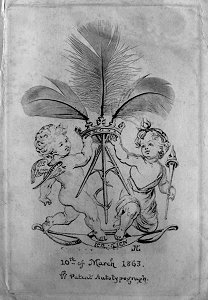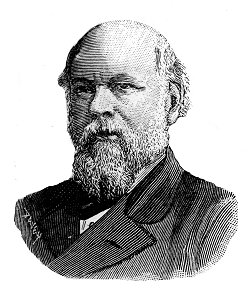|
In 1863 Wallis gave a paper before the Royal Society of Arts entitled "The New Art of Auto-typography". "Autotypography" was a "new art process for the re-production of drawings". There was, at this period, a considerable interest in finding new methods of printing, or otherwise producing, multiple copies of works of art. We have already seen that this interest was not without its critics and that Ruskin had reservations about it. But the Cole group had no such reservations. Owen Jones's interest in developing lithography is well known but during the century a somewhat bewildering array of other methods of reproduction were invented and used with greater or less success. Indeed Wallis starts his paper by reviewing the history of some of these attempts, partly to put his own invention in its context but partly to give proper credit to two of his friends, the Birmingham men, Richard Ford Sturges and W. C. Aitken, and thereby to show that the developments attributed to the Imperial Printing Office at Vienna were really based on work done in Birmingham. Wallis claims to have been well acquainted with the work of Sturges and Aitken and it was on seeing a print of a feather, which Aitken had made by impressing the feather directly into a metal plate, that it occurred to him that it should be possible to do the same with a drawing. Wallis seems to have experimented with this from 1858 until the time of this paper - and even then the process was not fully developed.
One advantage of this process was that "no reversal of the subject is required, as it is drawn exactly as it is to appear when printed". Wallis also points out that, as the gelatin sheet is transparent, it was possible, with the aid of a light box he had invented, to trace existing drawings "and, of course, this applies to photographs, which may be largely used as guides, and art thus made to supplement science, since the artist has the power of selection in reproduction of the forms of the photograph".
What is important about Wallis's work on the subject is that he was clearly seeking some way of making pictures easier to reproduce in large numbers. It is worth rehearsing, yet again, that our world is flooded with images, in black and white and colour, still and moving; but the early and mid-Victorian world was not. When, to take an illustrative example, Wallis first left Wolverhampton to seek an art education, the only pictures most people would be able to see were a few stained glass windows and some prints in books and broadsheets, available from the few local printers and stationers. The colour printing processes which were available were slow and very expensive. Wealthy private individuals would have such books and many would be trying to assemble a collection of better prints and even some oil paintings and water colours. It was with good cause that Wallis in the 1838 and 1839 exhibitions had sought out, borrowed and put on display such works from local collections. It was for this reason - that the originals were all you had - that fine art sections were added to the big exhibitions of industrial arts. With autotypography Wallis was trying another way of getting art to the people. Since it is currently fashionable to talk about Christopher Dresser as much as possible, I will mention here that when Wallis, in this paper, sets about describing other processes for the reproduction of flat objects by means of metal plates, he says "the nature printing of Dr. Dresser by transfer from leaves of plants, &c, to paper direct, and his process of transfer to lithographic stones and printing therefrom, being outside the present question, although very interesting and useful in many points" will not be mentioned. It is, perhaps, not sufficiently remembered that Dresser, although making his living from industrial designing, was also keen on educating the public in this sphere and, in trying to do so through lectures and articles, made no secret of his methods. This interest of his in "nature printing" is also not secret and may well, like Wallis's interest in these processes, show his interest in making art more accessible to the public. |
||||



